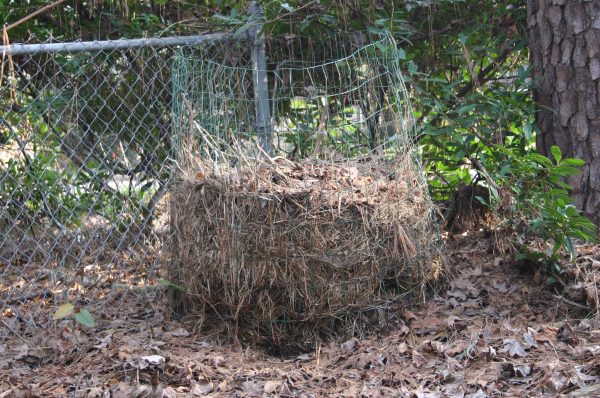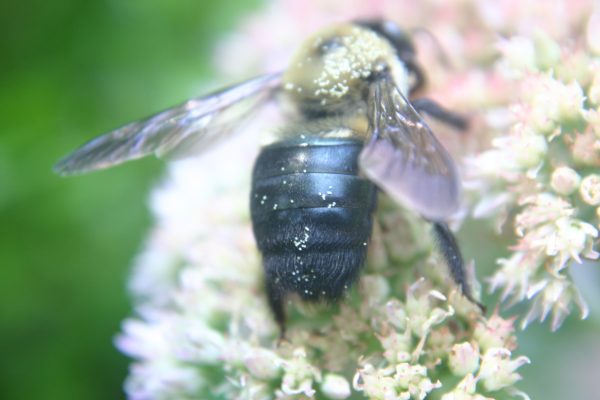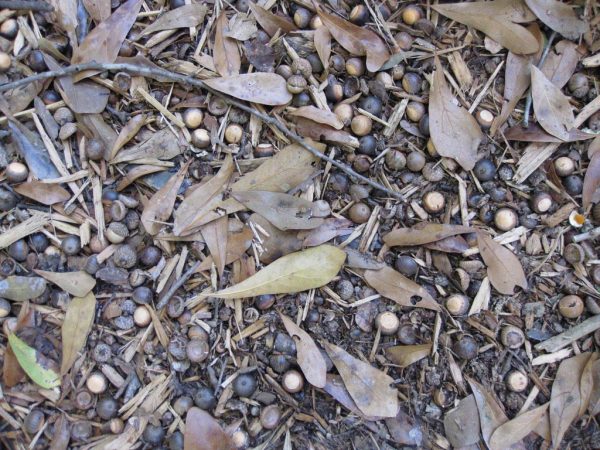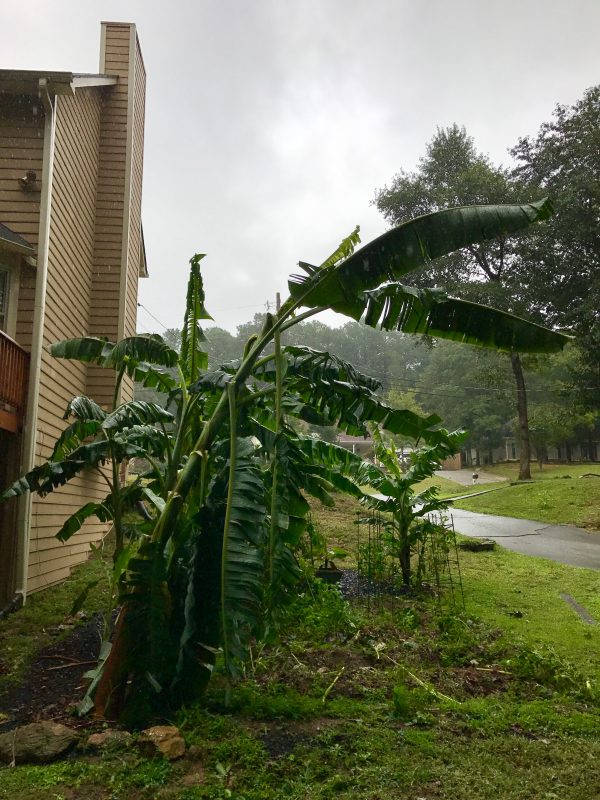Composting 101

Q: I am trying composting for the first time so I bought one of those compost enclosures in August. At this point it looks more like a garbage pile than what I expected compost to look like. Any suggestions?
A: New-born babies aren’t so attractive at first either, but you wouldn’t reject them would you? I know composters who stick their noses in every pile to inhale the aroma. I know others who plant flowers around their pile to hide it from view. Beauty is always in the eye of the beholder! Your compost pile is functioning normally but things are progressing slowly because you started in August and the weather became cool before the materials decomposed.
Here are the basics to making a compost pile you can brag about year-round:
1. Make it big enough. A pile three feet high and six feet wide can hold enough heat on a cold night to keep the decomposing fungi happy. A smaller pile gets cold and stops working until the weather warms up again.
2. Regularly add green materials or fertilizer. The creatures that break down your leaves and kitchen waste need nitrogen in order to do their job. They can get nitrogen from lawn clippings but you’ll need a lot: a layer three inches thick for every six inch layer of brown leaves. If you don’t have clippings, just add a cup of 10-10-10 to the pile and water it in. In a couple of days, the pile will be smokin’!
3. Mix up the pile with a shovel or rake. Oxygen helps the decomposers do their dirty work.
4. If all else fails, cover your “garbage pile” with pine straw and call it a “landscape focal point”. Harvest black compost from it in May and no one will be the wiser.
MORE INFORMATION
Composting – Collected Questions and Answers
COMPOSTING – IN TWO STEPS
When you drive past a pile of bags full of leaves next to the curb, think of them as money wasted twice. The leaves themselves could be piled in a back corner of the landscape and allowed to rot. The compost they make can be added to flower beds or spread over the lawn next spring. Compared to store bought ‘soil conditioner’, each bag of leaves is worth approximately $1.00! In addition, the bagged leaves usually go to an expensive municipal landfill. Taxpayers pay dearly for the construction and upkeep of the landfill. To put leaves, grass clippings and yard trimmings in a landfill is simply a waste of taxpayers’ money!
#1 PILE IT UP Composting is not rocket science! If you have a corner where two fences meet, pile leaves there. Compost bins can be purchased or you can simply make one out of stiff, welded wire fencing. Join the ends of a piece of fencing that is four feet high and ten feet long. The hollow barrel you have created is a perfect compost bin! Pile leaves and grass clippings in it during the year. Next spring, lift the bin off of the pile and scoop out the rich compost underneath.
#2 LET IT ROT There is no need for ‘compost helper’ products. Mother Nature will make compost without our help. Experienced composters will turn their piles of leaves a few times a year to make the process faster, but organic matter will decompose whether the pile is turned or not. A good spraying with the garden hose while the leaves are being piled will help keep the pile moist. A shovelful of soil sprinkled over each successive bag of leaves will introduce all of the fungi needed to make perfect compost by next summer.
IF YOU MUST DO SOMETHING If you can’t bear the thought of compost happening without your input, try turning the pile over once every month and add a cup of 10-10-10 fertilizer each time. The turning will add oxygen to the center of the pile. The fertilizer will feed the fungi which are happily eating your leaves but needing a bit more energy. Don’t hesitate to add more leaves as they fall this winter – a good compost pile has to be at least four feet tall and four feet wide to keep the fungi cozy inside the pile.
Composting is a practical and convenient way of recycling leaves, lawn clippings, and trimmings from the landscape. It’s also an economical way of producing rich humus that can be added back to your soil. Anyone can compost, and with landfills filling up fast, we need to reduce the amount of these natural materials that are currently being dumped there.
Compost is the rich dark humus that results from the natural decomposition of plant and plant products under controlled conditions. Almost any organic plant material can be used for composting, including grass clippings, leaves, flowers, annual weeds, twigs, chopped brush, old vegetable plants, straw, and sawdust. Avoid composting diseased plants, weeds with seeds, or invasive weeds like morning glory and nutsedge. Kitchen peelings and coffee grounds can also be composted, but avoid adding table scraps with meat, grease, or dairy products because they may attract animals. Compost piles generally have no odor if they have good ventilation. Odor-causing bacteria are killed by heat within the pile. If animal manures are added to the pile some initial odor can be expected, but it will stop as the pile matures.
To start a compost pile, choose an out-of-the-way place in full sun with good drainage. A frame or structure to hold the pile is not necessary but does help decomposition by keeping the materials together and provides a neater appearance. Any type of structure can be used, including welded wire, fencing, pallets, or blocks. Leave open spaces in the sides to allow good air circulation through the pile and the bottom open to the ground. The structure should be at least 3 feet x 3 feet x 3 feet. Large piles break down faster than smaller piles but are more difficult to manage.
Decomposition works best when a variety of materials are mixed together. Most often piles are layered with whatever organic material is available. The smaller the pieces of organic matter, the faster it will decompose. Once a layer of organic matter is added, add a little garden soil or animal manure. This adds fungi, bacteria, insects and worms to the pile and helps speed up the decomposition process. These critters feed on the organic matter, breaking it down into fine-textured humus. Keep the pile moist but not too wet. To speed up the decomposition process and prevent odors, turn the pile once a month using a shovel or spading fork. Compost is ready when it looks like rich crumbly earth and you can no longer recognize the original plant material.
When your compost is ready, you can use it in several ways. Add it to the soil before planting to improve soil structure and to help hold nutrients and water for use by plants. You can also use it as a mulch on the soil surface or as potting soil for container plants. Compost slowly releases a small amount of plant nutrients, but it is not a substitute for fertilizer. It should be considered a soil-builder rather than a fertilizer.















